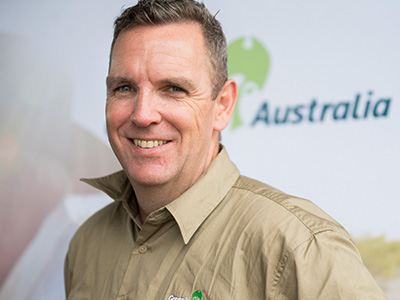The missing link that can grow our economy and save the planet
We are at a critical juncture in determining the future of Australia’s approach to managing our land and biodiversity.

Message from Brendan Foran, CEO of Greening Australia
In recent weeks, the Australian Government has announced legislation and policy reviews in three key areas: threatened species legislation, the Emissions Reduction Fund, and the agriculture sector.
With these announcements, a real opportunity has arisen to bring much-needed cohesion to government policies for the land sector, ensuring better economic, social and environmental outcomes for all.
The missing link is an approach to tie the trifecta of reviews together, to come up with holistic, landscape-scale practical solutions that will make a real difference in tackling Australia’s biggest environmental challenges: climate change, biodiversity loss and land degradation.
What are the three reviews involved?
Recently, 11,000 scientists from across the globe declared a climate emergency and set out urgently needed actions such as “End the destruction of nature and restore forests and mangroves to absorb CO2”. This follows an open letter from 240 scientists to Prime Minister Scott Morrison stating that we need to improve the conservation of our threatened species, or risk being left to watch their decline and multiple species extinctions.
The Government has concurrently announced the review of the Environment Protection and Biodiversity Conservation Act (EPBC Act), led by former ACCC Chairman Graeme Samuel. This review has the potential to make a real and lasting difference to the conservation of Australia’s unique environment.
At the same time, a panel led by the Australian Business Council’s Grant King has been tasked to review the Emissions Reduction Fund (ERF), now the Climate Solutions Fund, with a view to improving progress towards the carbon dioxide emissions targets set under the Paris Agreement. Despite around 80% of the carbon secured under the ERF coming from the land sector, take-up of the scheme has been limited to only a few of the methods available under the ERF. Improvements are required to increase carbon abatement in the agriculture sector and make the fund work more effectively.
Finally, the Government is undertaking an inquiry into growing the Australian agriculture sector to $100 billion by 2030. This roadmap developed by the National Farmers Federation, supported by the Morrison Government, includes an aspiration that Australia’s farms lead the world in environmentally-friendly practices. It also includes a target of $5 billion of farm income for ecosystem services provided by farmers.
While these three reviews are a move in the right direction, they would be stronger if considered together.
What should this holistic policy alignment look like?
A good example is playing out in Northern Australia, through savanna fire management projects. By carrying out cooler, early dry-season burning, land managers on savannas are reducing the risk of damaging late dry-season bushfires, while improving biodiversity and reducing carbon emissions. These projects are attractive to land managers because the resulting carbon credits generate income through the ERF and are supported by the Australian Government’s Indigenous Ranger funding and the Indigenous Protected Areas initiative to promote biodiversity and the protection and care of cultural heritage.
How do we replicate this type of approach across the nation to tackle climate change, biodiversity loss and land degradation? The answer is simple: by planting native trees and vegetation across Australia in the right locations and configurations, we can recreate threatened species habitat; support productive, climate-resilient agriculture; and remove carbon from the atmosphere in the process.
If, as for savanna fire management, we better incentivise the retention and expansion of tree cover across agricultural lands, then land managers will be supported to undertake revegetation and we will be able to sequester carbon at a scale that makes a significant contribution towards Australia’s Paris Agreement targets for 2030.
The $2.2 billion Climate Solutions Fund provides the funding and the vehicle under which this could be done. With some enhancements to the existing approach, farmers and landholders could be financially rewarded for carbon abatement, while improving farm productivity and resilience and delivering biodiversity outcomes.
This would deliver a win-win-win for agriculture, conservation, regional communities and climate, and would attract private investment in the Australian land sector as the national and international market for carbon sequestration develops.
A call for action
Modelling shows millions of hectares of marginal farmland across Australia that would benefit from integrating native vegetation to boost profitability and mitigate risk in our changing climate. Greening Australia has ambitious goals to work with thousands of landholders to integrate native habitat with productive agricultural landscapes. With some 7.7 million hectares of habitat lost since the introduction of the EPBC Act in 1999, our work partnering with landholders will go a long way to reversing this – but we, and other groups involved in repairing the landscape, can’t do it alone. We need government to support innovative approaches to financing environmental initiatives, to make a lasting difference.
We encourage the Australian Government to seize this chance to build a more integrated policy platform that will ultimately diversify investment, provide landholder incentives, build resilience in the land sector and create a more sustainable economy.
How mature environmental markets will save the planet